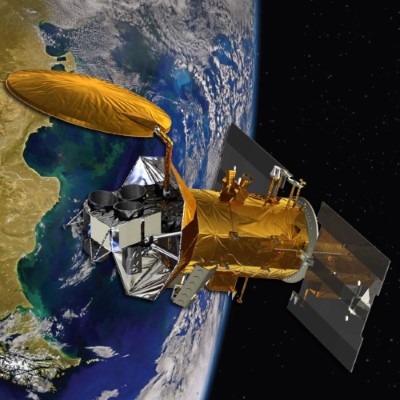Earth Science Week Classroom Activities
Ocean Currents Change Our Earth

Activity Source:
NASA. Adapted with permission.
Ocean currents — the continuous, directed movement of ocean water — affect regional climates and alter the biological and chemical characteristics of seawater. Currents can flow for long distances both at and below the ocean’s surface. Wind drives surface currents, whereas density often drives deep ocean currents.
Density, a physical property of matter, is mass per volume. Density is not simply weight — it depends on the volume of the sample (the amount of space the sample occupies). The density of water can easily be altered by changing its temperature (cold water is more dense) or by changing the amount of dissolved substances such as salt in the water (salt water is more dense). Ocean water that is denser will sink, setting up the motion that drives deep ocean currents.
To understand more about water density, calculate the density of two different water samples: tap water and “ocean” water. (You can make “ocean” water by adding salt to tap water.) Density is calculated by dividing the mass of the water by its volume.
NASA
When it launches in 2011, NASA’s Aquarius mission will provide global sea surface salinity measurements. Over time, those measurements will provide a better understanding of the ties among the water cycle, ocean circulation, and climate.
Materials
- Tap water
- Graduated cylinder (100 mL)
- 2 g table salt
- Paper towels
- Eyedropper
- Balance (0-200 g)
Procedure
Step One: Determine the density of tap water:
- Measure the mass of the empty graduated cylinder. Record the weight.
- Fill the cylinder with water to the 100 mL line. This is the volume.
- Measure the mass of the cylinder with water. Subtract the mass of the empty cylinder from the mass of the filled cylinder.
- Divide the mass of the water by its volume. Record this density reading.
Step Two: Determine the density of tap water containing dissolved salt:
- Use an eyedropper to remove 2 mL of water from the cylinder.
- While the cylinder is sitting on the scale, add 2 g of salt. Read the new water level inside the cylinder. This is the new volume.
- Divide the mass of the water inside the cylinder by its new volume. Record your result for the density of salt water.
Discuss: Compare the densities of the salt water and the tap water. Why did the water’s density change when salt was added? What would happen to the density of seawater in an area of the ocean that receives a large amount of rainfall, such as when a hurricane dumps trillions of gallons of rain?
For more information and activities related to water density, go to the NASA Aquarius mission site.

